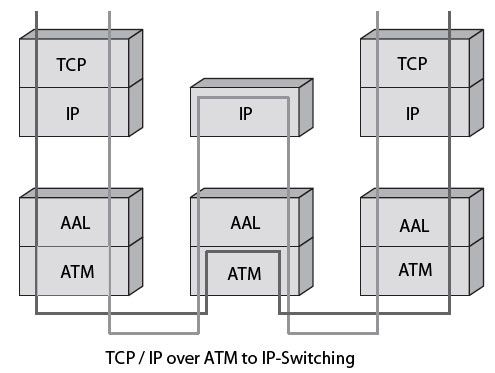IP-switching developed by Ipsilon Networks, Inc. it was the first version of the label-switching. In this architecture, the road is determined by the IP flow. IP-switch nodes replace the routers is working in router mode to trace the path with the first IP packet flow, or by ATM cell switching mode, for all the cells which follow the route path. The first IP packet is routed normally, such as an Internet network. The route is determined by an Internet routing algorithm.
Once determined the first router to cross, the IP packet is subdivided into ATM cells to cross the first DSL. The IP packet is reassembled at the first switch IP router, which decides the route to follow, still using a conventional Internet routing algorithm. At the same time, a switching table is determined for switching cells of the same stream. After crossing the first node, the IP packet is again fragmented into ATM cells, which are then transmitted to the next node grouped, and so on. All subsequent IP packets belonging to the same stream are divided into ATM cells switched by the transmitter and on the route path. The latter becomes an ATM virtual circuit end to end. The routing-switching solution of this technique is illustrated in Figure.

The opening of the road is carried out at every new flow occurring in the network. If this solution is quite cumbersome to manage, it can affect service quality with every wave. The main criticism addressed to it is not to spend the scale, that is to say, not being able to reach a large number of flows to manage simultaneously. Toshiba has proposed a similar solution called CSR (Cell Switching Router).
 Dinesh Thakur holds an B.C.A, MCDBA, MCSD certifications. Dinesh authors the hugely popular
Dinesh Thakur holds an B.C.A, MCDBA, MCSD certifications. Dinesh authors the hugely popular